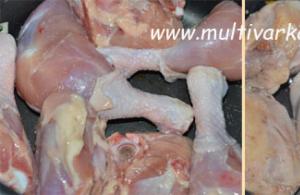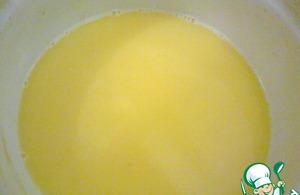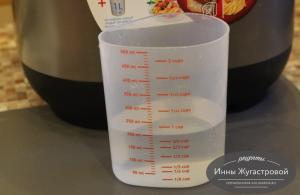The technology for making a low-alcohol drink from apples has been known for several centuries. Real cider is made without adding yeast and without pasteurizing the finished product.
Preparatory stage
If you are seriously interested in how to make cider, then you need to decide what will be useful to you in the process of making it. First you need to choose apples. Sweet and sour varieties of these fruits are best suited for these purposes. To prepare the drink you will also need sugar, water and a fermentation container. The composition of additional products depends on the recipe you choose to prepare. In addition to the above, you will need a regular medical rubber glove or a special cap.
Before you figure out how to make cider at home, you need to prepare your apples. They need to be rinsed with water, the core and seeds removed and chopped on a grater, in a food processor or with a knife. There is no need to peel apples, and you should also not pour boiling water over them or use detergents to clean them. The peel of these fruits contains yeast that promotes fermentation.
Preparing the drink in the standard way
One of the most common apple cider recipes is the following. It is necessary to prepare the fruits in the manner described above and fill a washed and sterilized glass container with them approximately 1/3 full. You also need to add sugar at the rate of 100 grams per liter of apple mass or, as it is also called, pulp. You can also pour some raisins into the container.

If it seems to you that the apples are not juicy, then water should be added to the container with the pulp at a 1:1 ratio. Now a regular medical rubber glove is put on the neck of the jar. From it you can judge how the fermentation process is going. In addition, it is needed to block the access of oxygen, otherwise the pulp may simply turn sour. Now the container needs to be placed in a dark place where the temperature is maintained around the clock at 21-30 degrees Celsius. It should stay there for about a week. You can consider that making cider at home has been successful if after the specified time you see an inflated glove on the can. The time has come to remove it and strain the resulting drink into a jar.
But that is not all. Now the strained liquid must be placed in the refrigerator and wait for a precipitate to form. After this, all that remains is to drain the clean cider without grounds using a hose, pour it into bottles and seal tightly.
Correct Method
Those who want to learn how to make cider according to the classic recipe will have to find ripe wild apples. You will need to squeeze out pure juice from them. It is the basis for preparing a classic low-alcohol drink. The juice is poured into a glass container so that it fills it 2/3. The jar used is closed with a special lid - a water seal. When using it, air does not enter the container, but the released carbon dioxide can escape from it.

The jar must be placed in a dark place for at least three weeks, in which the temperature will be at 22 degrees. After this, it is necessary to drain the clean liquid through the hose so that the sediment remains in the container. This fermented juice must be poured into jars, covered with a lid and stored for 3-4 months at a temperature of 10 degrees. Only after completing all these steps will the cider from the juice be ready, it can be bottled, tightly closed and stored in the refrigerator for up to three years.
Please note that no sugar, raisins or yeast are used in its production. This product is considered natural.
Ancient recipe
But these are not all the ways to make cider. To make the drink using the old method, you will need a canvas bag and a wooden barrel. If necessary, the barrel can be replaced with a large enamel pan. Washed and cored apples are poured into a bag, which is placed in a prepared container. After this, you can start preparing the syrup. It is made from 6 liters of water and 1.6 kg of sugar (if desired, you can use honey instead), this amount is needed for 8 kg of fruit. The top of the apples is covered with a lid - it can be either solid wood or mesh. A pressure is placed on it so that the apples cannot float.

After these steps are completed, the container is placed in a dark place for fermentation.
When the process is complete, the liquid is drained into a clean container using a flexible hose. With the same apple pulp, these steps can be repeated several times. That is, you again need to prepare the syrup and pour it over the fruit, and after a month, drain the clean liquid. The drinks obtained from several approaches are mixed and settled in a cold place for at least six months. Only after this the low-alcohol cider wine is considered ready.
Recipe with yeast
Many people believe that using additional components will help speed up the process of preparing the drink. But it is not always the case. It will take more than six months to make cider with yeast. It is done as follows.
The apples are finely chopped, placed in a jar and filled with water so that they are completely covered. This container is placed in a warm place for fermentation for about two weeks, during the process the liquid must be stirred regularly. After the specified period, the resulting juice is filtered and slightly heated.
Now you need to add sugar and yeast. The main thing is to maintain proportions. So, 25 grams of yeast and 5 glasses of sugar are mixed with 4.5 liters of fermented juice. Now you need to put it in a container and cover with a lid. As soon as the liquid begins to ferment, it must be poured into a barrel; after the process is completed, it is sealed and sits like that for about six months. Only after 6 months will homemade apple cider be ready and can be bottled.
Quick recipe

Another option for making a low-alcohol champagne drink is the following.
For it you will need 8 kg of apples, 2 kg of sugar, 10 liters of water and the zest of two lemons. Note that you can make cider from these ingredients in just a week.
A homemade recipe with accelerated technology looks like this. Small apples are selected, cored and cut in half. The fruits prepared in this way are placed in a container, covered with sugar and filled with water with the addition of lemon zest. The container is covered with gauze, previously folded in several layers, and placed in a warm place. After a week, the drink can be strained and bottled, it will become cider. The accelerated home preparation method, of course, does not coincide with the technology established by specialists for making this drink without adding sugar and other components, but you will be able to drink it within a week.
There is another way to make this low-alcohol drink. It can be made from freshly squeezed juice from non-acidic apples. Please note that packaged drinks sold in supermarkets cannot become the basis for cider.

To prepare it, you need to add 100 grams of sugar, wine yeast or a special starter for each liter of juice. By the way, it can be made from unwashed raspberries, water and sugar. To do this, crushed berries are poured with half a glass of warm water and covered with a spoon of sugar. The container is closed and placed in a warm place for three days. At the same time, it must be shaken every day.
The juice, mixed with starter and sugar, is poured into a jar and closed with a water seal. The container is kept in a cool place until the release of gas bubbles stops, but this is not cider yet. A homemade recipe for this drink requires that the liquid be carefully drained without sediment. After this, you need to wash the container, pour the base of the future wine back into it and put it in a cold place for three months. After this period, the cider can already be bottled.
Dried fruit drink

If you are excited about making this drink in the middle of winter, then don’t be upset and wait for a new apple harvest. For the drink, you can buy inexpensive fresh apples, which are sold all year round, and dried fruits. Cider is made from these components as follows. A layer of dried apples is placed in a jar or barrel, and on top of them are prepared, cut into large pieces of fresh ones. The fruit should fill about half of the container you plan to use to make cider. A homemade recipe for making a drink from these components is that they need to be poured with boiled, cooled water and sealed for about three weeks, leaving in a dark place for successful fermentation. After the specified period, the cider can already be drained. The base for this drink can be filled with water and infused at least three more times. But keep in mind that you will get a rather sour drink. It can be sweetened before use.
Drinking culture
Once you understand how cider is made, it's also a good idea to figure out how it should be consumed. It is believed that the dry drink is ideal for various seafood, such as shrimp and oysters. It can also be successfully combined with various cheeses, low-fat kebabs and vegetables. But sweet varieties are best drunk with desserts. This cider goes well with baked goods, yogurt cakes, sweets, chocolate, and mascarpone.
This drink has many benefits. It does not contain any chemical additives; in addition, it is not only a source of vitamins B6, B1, C, but also iron, calcium, potassium, and pectin. They also say that cider can normalize blood pressure and have a positive effect on the functioning of the stomach and intestines. But do not forget that the fermentation process produces an alcoholic drink, so you should not abuse it.
In 2016, employees of the Samara university opened their own cidery, focusing on products made from natural apple juice. The chief technologist of the Department of Cider Making, Candidate of Technical Sciences, Associate Professor Pavel Chaldaev and Director Ruslan Malygin told the editors of Profibeer the history of the enterprise, dispelled myths about the meager variety of ciders and noted the importance of using farm raw materials.
“Cider gives as much room for creativity as beer”
There are two technologies for producing cider - from directly pressed juice and from concentrated juice. What technology are you using?
Paul: We use both technologies for different target audiences. Traditional cider technology involves, of course, using directly pressed apple juice, but more and more cider producers around the world are using concentrated apple juice, obtained by evaporating most of the moisture from directly pressed juice. This also applies to countries traditionally involved in cider production, including France and the UK.
Ruslan: The cider market experienced a great catastrophe, as a result of which connoisseurs of this noble drink completely lost faith in the integrity of domestic cideries. Statistics mention the low demand for cider, and it is clear that there is practically no quality product. Most manufacturers use low quality concentrated apple juice at best. The goal of our company is to change this situation using domestic raw materials. We are currently working with apple processing plants that supply us with ready-made, directly pressed apple juice. This has made our task much easier, and now we are not limited in our own apple-squeezing capacity. In the near future we plan to make varietal ciders. We do not deceive consumers and openly write on the labels what juice a given type of cider is obtained from.
Where do you get the raw materials for your cider?
Ruslan: At the beginning of our journey, we used apples exclusively from the Samara region and processed them ourselves. Small production volumes made the final product unaffordable, so we decided to purchase ready-made directly pressed juice. Farmers from neighboring regions helped, who can supply juices from the required apple varieties. There are plans to start our own gardens.
Paul: We also cooperate with a number of Russian producers of concentrated juices that process apples from central Russia. This juice is most suitable for producing high-quality ciders. Juices from southern apples are not suitable, as they contain few acids and phenolic substances.

Do you have your own production, or a contract?
Ruslan: This is our own micro-enterprise located in Samara. It is equipped with fermentation tanks and storage tanks for cider materials. Equipment of domestic production. When working with ready-made juice, we were able to save money on the apple processing line. The enterprise's capacity is small - no more than 10 tons per month.

You developed some of the equipment together with familiar engineers, tell us about this experience.
Paul: Production is creativity; you constantly need to change something, modernize it, adapt existing equipment to current tasks, or develop it anew. There was a need to assemble several devices, but we are not doing this purposefully.
There is an opinion among brewers that cider gives much less room for creativity than beer. What do you think of it?
Ruslan: It is unclear how such thoughts could come. Just imagine how many different varieties of apples there are in the world! In our Samara region alone, several dozen new varieties were bred during the Soviet years.
Paul: We're not even talking about different fermentation technologies. Ciders can be light and clear, or dense and cloudy, dry and sweet, sparkling and still. We think that after our words, many will rethink this opinion.

What interesting experiments have you had with cider?
Ruslan: For me, one of the most interesting experiments is making apple kvass using wild flour sourdough. It can be classified as a non-alcoholic drink.
Paul: We tried dry hopping the cider with American hops with fruity and citrus aromas, and it turned out very well. But by law, cider is only fermented apple juice and the use of hops in its production is prohibited.
We mainly experiment with apple varieties and select blends. The work is carried out at a scientific level, analyzing the physical and chemical parameters of juices and cider materials from various varieties of apples, and, of course, tasting them. The main emphasis is on searching for apple varieties with a high content of tannins and aromatic substances.
“It is in dry ciders that the taste of apple juice is revealed”
Tell us about your line of ciders.
Paul: We produce ordinary and vintage ciders. Ordinary ciders are ciders of an average price category, obtained by blending fermented reconstituted apple juices, aimed at a wide audience.
Vintage ciders are aged premium ciders. The blend includes cider materials obtained by fermenting directly pressed apple juices.
Fermentation is carried out using pure cultures of French wine yeast. This allows us to obtain products of constant quality with high taste and aroma characteristics. Our range is traditional cider made exclusively from apple juice, from dry to sweet.
There is an opinion that in Russia they do not understand dry ciders. How are your sales in this segment?
Paul: Both dry and sweet ciders are sold. There is undoubtedly a trend towards increasing the consumption of dry ciders, but one way or another, many are accustomed to drinking cider with residual sugars. Unfortunately, there are not many connoisseurs of dry ciders, as well as dry wines, in Russia. But we are trying to convey to the potential audience that it is in dry ciders that the full taste of fermented apple juice is revealed.
How did your cidery come about?
Ruslan: Our history began with the Samara Polytechnic University, where Pavel, our chief technologist and teacher at this university, was involved in the creation and development of a winemaking laboratory in his department. He experimented in developing the technology of wines and ciders from local raw materials. Pavel talked so enthusiastically about his work that I also became interested in this business, and we decided to create our own enterprise. This is where the logical name came from, reflecting the scientific component of our cidery. Each batch of raw materials and cider is controlled in the university laboratory, and students undergo practical training at our enterprise.

How did you enter the market and find your first clients?
Ruslan: It all started with free tastings and free samples. Local bars wanted to try something new, and they gladly took our products. A little later we went to regional chain stores, and then we realized how vast our country is. Finding clients is simple - now there is a unique opportunity to ride the “craft” wave. The first deliveries to each customer were carried out on individual terms, sometimes we worked only on our own enthusiasm.
Paul: It was actually difficult to start. A very large number of people have the opinion that cider is a low-alcohol, sweet, carbonated lemonade. Most people were surprised, even shocked, after trying our products, after which they changed their attitude towards this drink.
“Natural cider producers need to be put on a par with winemakers”
In which cities can you try your ciders?
Ruslan: Currently, several distribution companies work with us in Russia in the largest cities: Moscow, St. Petersburg, Yekaterinburg, Nizhny Novgorod and others. We run small towns on our own, as long as we have enough strength to do so.
How did the cidery cope with the sharp increase in the excise tax on cider?
Ruslan: At that moment we were just starting work, we had to adapt, but it was not easy. Naturally, the end buyer now has to pay much more for the drink, given these circumstances. On the other hand, the increase in excise taxes did not have a positive effect on unscrupulous producers of pseudo-cider, and from this point of view it can be assumed that this is a good moment in the development of cider in Russia.
What do you think about the initiative of OPORA Russia, according to which only a drink made from directly pressed apple juice can be called cider?
Paul: We certainly support the initiative and believe that natural cider producers should be put on a par with winemakers and given similar concessions.
How do your ciders differ from others?
Ruslan: Since our history began with winemaking, we began to produce still ciders, i.e. still. This allows the consumer to better understand the “body” of the drink; after drinking it, there is no unpleasant sensation from carbon dioxide.
Paul: We focus on dry and semi-dry ciders, which best reveal the taste of fermented apple juice.

Having once been inspired by the delicious craft beer that my good friend makes and having participated in the process of making it, I had a desire to make something myself... And my eyes settled on cider. Well, the drink is very interesting, popular in Western countries, with a long history, it can be unfairly forgotten in our country, and the main ingredient - apples, a lot of them in the orchards, are disappearing.
His first cider was made in a small volume, about 8 liters, with an alcohol content of 5.5%. No photos of the process were taken, so only a short description. It turned out quite well, despite some shortcomings in the production process. Briefly about them, ale brewer's yeast from the kit was used, fructose was added to obtain the required initial density, and purchased packaged apple juice was added to one of the containers (each 5 liters) to achieve the required volume.
By the way, packaged apple juice ultimately had a negative effect on the aroma. Cider made entirely from freshly pressed apples is richer in both taste and aroma.
To make cider, a group of enthusiasts – my close friends – was organized. Initially, it was planned to get about 23 liters of apple juice, but I was told that this might not be enough and, just in case, I took with me two fermentation containers, 32 liters each. And as it turned out, it was not in vain :) Each of the containers at home was hermetically sealed with a lid and transported in this form.
The extraction of juice was carried out in a garden located near the city, and they worked in the fresh air. This is another bug that was eliminated from the previous time; squeezing a large amount of juice in an apartment is a very troublesome task, one might say “dirty”; you’ll definitely have to wash half of the kitchen afterwards from sticky juice!
About apples. In the production of cider, in theory, specially obtained varieties of apples with a certain acid content are used. I came across information on foreign websites that the acidity level of juice for making cider should be in the range of 3.2-3.8, deviations from these values can lead to spoilage of the cider. In any case, this issue requires separate study.
Local apples were used in the production of our cider. There were only two varieties, and one of them, which was the main one, could not be fully identified. The second variety is called “Ural Bulk”, popular in local areas.
 Having searched the Internet for information, I came to the conclusion that perhaps this is the “Bashkir handsome” variety, which is quite often found here, or “Buzovyazovskoe”.
Having searched the Internet for information, I came to the conclusion that perhaps this is the “Bashkir handsome” variety, which is quite often found here, or “Buzovyazovskoe”.
 Juice extraction was carried out using 3 juicers, and to increase the efficiency of the entire process, the pulp from the juicers was run through a fruit press:
Juice extraction was carried out using 3 juicers, and to increase the efficiency of the entire process, the pulp from the juicers was run through a fruit press:
 Using a press, it was possible to additionally extract about 10 liters of juice from the pulp. Unlike juicers, the juice from the press was cleaner and practically without pulp. And the use of a fruit press for production is more authentic.
Using a press, it was possible to additionally extract about 10 liters of juice from the pulp. Unlike juicers, the juice from the press was cleaner and practically without pulp. And the use of a fruit press for production is more authentic.
 But this furry assistant took an active part in our business.
But this furry assistant took an active part in our business.
 Or he was just pretending, but he himself...
Or he was just pretending, but he himself...
 Meanwhile, things went on, and the juice arrived.
Meanwhile, things went on, and the juice arrived.
 After the press, packages like these remained in the basin.
After the press, packages like these remained in the basin.
 Inside is “apple pie”.
Inside is “apple pie”.
 As a result of the heroic work of a well-coordinated team, about 90 liters of apple juice were extracted in half a day!
Both fermentation containers were filled to the maximum; they could have been filled more, but then they would have become completely unbearable. All the remaining juice was used for canning.
As a result of the heroic work of a well-coordinated team, about 90 liters of apple juice were extracted in half a day!
Both fermentation containers were filled to the maximum; they could have been filled more, but then they would have become completely unbearable. All the remaining juice was used for canning.
 We received about 51 liters of apple juice ready to ferment into cider. But before moving on to the next stage, you need to know its density. For this we use . The device showed us that the density of our juice is 10.1-10.2%. Knowing the initial and final gravity, we can calculate the amount of alcohol produced after fermentation.
We decided not to experiment with fermenting juice with wild yeast and used special ones for this purpose.
We received about 51 liters of apple juice ready to ferment into cider. But before moving on to the next stage, you need to know its density. For this we use . The device showed us that the density of our juice is 10.1-10.2%. Knowing the initial and final gravity, we can calculate the amount of alcohol produced after fermentation.
We decided not to experiment with fermenting juice with wild yeast and used special ones for this purpose.
 The yeast was added on the spot, just one packet per container. Before this, they were stored in the refrigerator, as recommended.
After adding yeast, the containers were hermetically sealed and transported for the next stage - fermentation.
The yeast was added on the spot, just one packet per container. Before this, they were stored in the refrigerator, as recommended.
After adding yeast, the containers were hermetically sealed and transported for the next stage - fermentation.
 After some discussion, it was finally decided to add a little fructose into one of the containers before fermentation to obtain a slightly larger amount of alcohol. The density after addition was 11%.
After some discussion, it was finally decided to add a little fructose into one of the containers before fermentation to obtain a slightly larger amount of alcohol. The density after addition was 11%.
 Installed. That's it, now the juice is put to fermentation. Got: 25 liters of juice with an initial density of 10.1% and
26 liters of juice with an initial density of 11%.
The temperature in the room where the future cider ferments is about 20-22 °C
The active phase will last several days, the rest of the time is necessary for the yeast to settle. For this cider, the total fermentation time will be two weeks. That's all. To be continued in the next part.
Installed. That's it, now the juice is put to fermentation. Got: 25 liters of juice with an initial density of 10.1% and
26 liters of juice with an initial density of 11%.
The temperature in the room where the future cider ferments is about 20-22 °C
The active phase will last several days, the rest of the time is necessary for the yeast to settle. For this cider, the total fermentation time will be two weeks. That's all. To be continued in the next part.
Apple cider is a light champagne, low-alcohol drink made from natural fruit juices. High-quality cider is made by natural fermentation of raw materials without the addition of yeast. Despite the fact that many well-known manufacturers use unique recipes to prepare this drink, it does not require excise taxes and today there are no specific requirements for the quality of raw materials or finished products. Classic cider production technology consists of two main stages - preparation of raw materials and its subsequent processing up to bottling.
Industrial cider production technology
Primary processing of raw materials is the removal of rotten and spoiled fruits, after which the ponies are thoroughly washed in a special washing machine. The prepared apples go to a crusher, which can be a hammer or disk crusher, depending on the requirements of local technologists. The resulting raw materials - crushed apples - are settled in special tanks, where the squeezed juice is cooled and filtered.

The technology for cider production in industry is that the finished cider material is additionally clarified and saturated with carbon dioxide. For aging, the treated drink is poured into specially prepared bottles and hermetically sealed.
Cider production equipment
Preparation of this drink is possible not only in industry, but also at home. To obtain this drink, high-quality raw materials and equipment are required. The necessary equipment for cider production is easy to find in any apartment:
- fruit chopper - meat grinder, juicer, blender
- filters - fine sieve, gauze
- containers for wort - enamel pan, copper basin, glass jars
- bottling utensils - jars and bottles with a capacity of 0.5-1 liter
Cider is a pleasant fizzy drink that serves as an excellent alternative to kvass and lemonade. Despite the fact that the technology for making cider is simple and does not require special knowledge, it should be taken into account that incorrectly selected raw materials can cause the drink to fail. It is very important to choose the right apples suitable for cider. Many manufacturers use specially grown varieties, but suitable ones at home are: Antonovka, Doneshta, Bumazhny Ranet, Grushovka.
In the industrial production of apple cider, several varieties are often used simultaneously, thereby obtaining a very bright and rich taste of the drink. At home, mixing juices from different apples can also achieve a unique taste and aroma. If desired, you can add juice from other fruits - pears, quinces.
Cider production at home differs from industrial production not only in the amount of processed raw materials, but also in blending. Homemade cider is prepared within a few days and is ready to drink after filtering.

You can keep the finished drink in an oak barrel or glass jars for several months, but for this it is very important to maintain a temperature of 10-12 degrees. Homemade cider is no less tasty and aromatic than industrially prepared cider.
Niche for gardeners
In Russia, cider is a rare product, something like an exotic thing that everyone has heard about but never tried. It is extremely rarely available at retail outlets where kvass and lemonade dominate. And cider is also not often found on supermarket shelves. Meanwhile, in the West, especially in France, this drink is very popular, and primarily those who have their own apple orchards succeed in this business.
Here in Russia, unfortunately, you can often hear: “There are a lot of apples, but, alas, there are few good ones, we eat them ourselves. The rest of the fruits are not marketable, they won’t take them to the store, and they won’t buy them at the market, so they have to be buried in holes.”
These are the people who can try themselves in a new small business. Of course, we can hardly talk about creating our own cider “empire” in the country of the victorious Slavic kvass, although who knows? However, by “conquering” just a local market, for example, your hometown, you can get decently rich.
Note that for cider making it is ideal to use mature apples of zoned varieties. Meanwhile, as European experts note, it is best to use national varieties for this purpose. They say that what the Germans like does not always please the British. In short, some peoples adore a tart drink, others - low-alcohol and invigorating, and still others - sweet. If we talk about our favorite variety, then this is the juicy Antonovka. However, as the famous proverb says, “there are no comrades according to taste.”
First of all, the recipe
Of course, the first step in planning a cider making business is to first anticipate how big the production will be, where it will initially be located, and how quickly sales will begin? “Try to evaluate everything you predict critically. Argue with yourself, advises small business expert Vyacheslav Petrov. - In particular, ask yourself the questions, what will you do if there are not enough raw materials? Can you rely on your neighbors in your dacha cooperative? And, most importantly, why will people buy your cider? In France, by the way, they start with a recipe. The tastier the drink, the higher the chances of success.”
If this is so, then a lot depends on the apples that a potential businessman has at his disposal. In other words, the taste of cider is a point of differentiation that will make the future company unique and attractive to customers. At the same time, we can safely assume that high-quality cider brewed according to the classic recipe will also be in demand. If only because in our country this drink is niche.
At the same time, it is necessary to minimize costs until the business begins to gain momentum. In other words, it is best to summarize all thoughts about the future and even doubts into a business plan and then strictly follow the plan.
A little about money and business difficulties
To get started, in addition to raw materials, you will need. For 250-300 thousand rubles you can buy a domestic kit, which, as manufacturers promise, is capable of preparing about one thousand liters of cider per day. However, you can make an apple press yourself by purchasing everything else in parts.
In a search engine you can easily find dozens of drawings and tips using a hydraulic car jack that creates a force of more than 3 tons. This approach will save up to 50%, although it increases risks during the production process. The businessman will also have to think about bottling and flash pasteurization machines, as well as a good tasting room.
“All technological operations are clear and simple,” says technologist Anna Vasilyeva, “this includes washing, grinding, pressing pulp, sulfitation, fermentation, clarification and saturation with carbon dioxide, if this is included in your plans. A businessman will need a clean and cool room equipped with water supply and sewerage. For my part, I would recommend ready-made stainless steel appliances. By and large, there is nothing complicated in this matter.”
In addition, “the best means of fighting “for a place in the sun” can be your own personal retail outlet. - Businessman Vasily Rukavitsyn advises. - From my own experience, I will say that it is unrealistically difficult for a newcomer to get on the shelves of supermarkets. It’s easier to open a cider cafe or something like that.” Rukavitsyn argues that for success in this business, two prerequisites are necessary: your own apple orchard and guaranteed access to customers, for example, when a friend owns shops or cafes.
As for money, to start you will need at least 500 - 700 thousand rubles, which in the best case will pay off in 1.5 - 2 years. Among the “disadvantages” of cider production, we should also note the need to obtain excise taxes, the price of which is set by the state at 9 rubles per liter. Finally, we repeat that the entrepreneur will have to face tough competition from kvass and lemonade. But, if you have an apple orchard and apples that have to be scrapped, then why not try your hand at commercial cider making.









